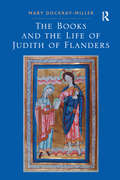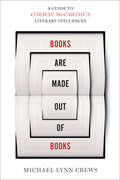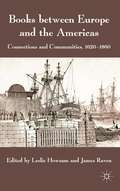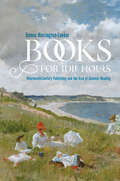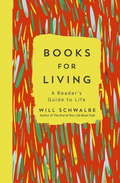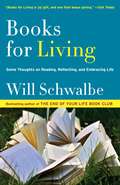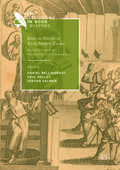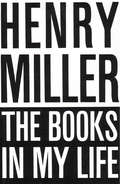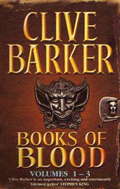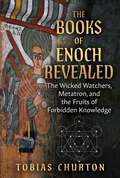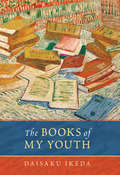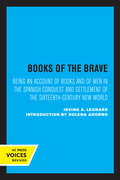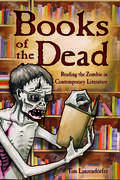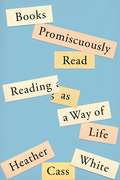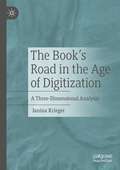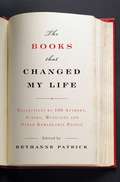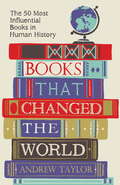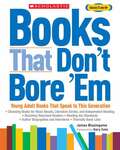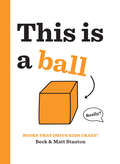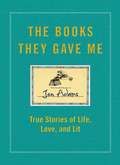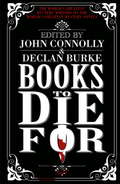- Table View
- List View
The Books and the Life of Judith of Flanders
by Mary Dockray-MillerIn the first full-length study of Judith of Flanders (c. 1032-1094), Mary Dockray-Miller provides a narrative of Judith’s life through analysis of the books and art objects she commissioned and collected. Organizing her book chronologically by Judith’s marriages and commissions, Dockray-Miller argues that Judith consciously and successfully deployed patronage to support her political and marital maneuverings in the eleventh-century European political theater. During her marriage to Tostig Godwinson, Earl of Northumbria, she commissioned at least four Gospel books for herself in addition to the numerous art objects that she gave to English churches as part of her devotional practices. The multiple treasures Judith donated to Weingarten Abbey while she was married to Welf of Bavaria culminated in the posthumous gift of the relic of the Holy Blood, still celebrated as the Abbey’s most important holding. Lavishly illustrated with never before published full-color reproductions from Monte Cassino MS 437 and Fulda Landesbibliothek MS Aa.21, The Books and the Life of Judith of Flanders features English translations of relevant excerpts from the Vita Oswinii and De Translatione Sanguinis Christi. Dockray-Miller’s book is a fascinating account of this intriguing woman who successfully negotiated the pitfalls of being on the losing side of both the Norman Conquest and the Investiture Controversy.
Books Are Made Out of Books: A Guide to Cormac McCarthy's Literary Influences
by Michael Lynn CrewsA “comprehensive and enlightening” study of Cormac McCarthy’s literary influences, based on newly acquired archival materials (Times Literary Supplement).Though Cormac McCarthy once told an interviewer for the New York Times Magazine that “books are made out of books,” he has been famously unwilling to discuss how his own writing draws on the works of other writers. Yet his novels and plays masterfully appropriate and allude to an extensive range of literary works, demonstrating that McCarthy is well aware of literary tradition, respectful of the canon, and deliberately situating himself in a knowing relationship to precursors.The Wittliff Collection at Texas State University acquired McCarthy’s literary archive in 2007. In Books Are Made Out of Books, Michael Lynn Crews thoroughly mines the archive to identify nearly 150 writers and thinkers that McCarthy himself references in early drafts, marginalia, notes, and correspondence. Crews organizes the references into chapters devoted to McCarthy’s published works, the unpublished screenplay Whales and Men, and McCarthy’s correspondence. For each work, Crews identifies the authors, artists, or other cultural figures that McCarthy references; gives the source of the reference in McCarthy’s papers; provides context for the reference as it appears in the archives; and explains the significance of the reference to the novel or play that McCarthy was working on. This groundbreaking exploration of McCarthy’s literary influences—impossible to undertake before the opening of the archive—vastly expands our understanding of how one of America’s foremost authors has engaged with the ideas, images, metaphors, and language of other thinkers and made them his own.
Books Are Made Out of Books: A Guide to Cormac McCarthy's Literary Influences
by Michael Lynn CrewsA “comprehensive and enlightening” study of Cormac McCarthy’s literary influences, based on newly acquired archival materials (Times Literary Supplement).Though Cormac McCarthy once told an interviewer for the New York Times Magazine that “books are made out of books,” he has been famously unwilling to discuss how his own writing draws on the works of other writers. Yet his novels and plays masterfully appropriate and allude to an extensive range of literary works, demonstrating that McCarthy is well aware of literary tradition, respectful of the canon, and deliberately situating himself in a knowing relationship to precursors.The Wittliff Collection at Texas State University acquired McCarthy’s literary archive in 2007. In Books Are Made Out of Books, Michael Lynn Crews thoroughly mines the archive to identify nearly 150 writers and thinkers that McCarthy himself references in early drafts, marginalia, notes, and correspondence. Crews organizes the references into chapters devoted to McCarthy’s published works, the unpublished screenplay Whales and Men, and McCarthy’s correspondence. For each work, Crews identifies the authors, artists, or other cultural figures that McCarthy references; gives the source of the reference in McCarthy’s papers; provides context for the reference as it appears in the archives; and explains the significance of the reference to the novel or play that McCarthy was working on. This groundbreaking exploration of McCarthy’s literary influences—impossible to undertake before the opening of the archive—vastly expands our understanding of how one of America’s foremost authors has engaged with the ideas, images, metaphors, and language of other thinkers and made them his own.
Books between Europe and the Americas: Connections and Communities, 1620�1860
by Leslie Howsam James RavenBooks between Europe and the Americas is a ground-breaking collection of essays by thirteen distinguished international scholars. It opens with a survey of current research, presenting fresh historical perspectives on the exchange of culture and ideas across the Atlantic. Contributions reveal how distances were bridged and isolated communities supported and strengthened by the transmission of books, print and correspondence. In particular, the collection offers pioneering comparisons between the northern Atlantic and that of Spanish and Portuguese territories further south. The volume opens with a survey of current research in transatlantic book history and explorations of overseas news in the 1620s, the American reception of Faustus and later accounts of scandal and heroism, and print and manuscript transmission in early Canada. Other essays consider British Atlantic naturalists, the Dutch New York book trade, the circulation of Latin and Greek texts in North and Central America, the Belfast-Philadelphia book trade, the transatlantic Brazilian novel, the arrival of the monitorial system in Spanish America, and US book imports and transatlantic crusades against slavery in the mid nineteenth century.
Books for Children, Books for Adults
by Teresa MichalsIn this groundbreaking and wide-ranging study, Teresa Michals explores why some books originally written for a mixed-age audience, such as Daniel Defoe's Robinson Crusoe, eventually became children's literature, while others, such as Samuel Richardson's Pamela, became adult novels. Michals considers how historically specific ideas about age shaped not only the readership of novels, but also the ways that characters are represented within them. Arguing that age is first understood through social status, and later through the ideal of psychological development, the book examines the new determination of authors at the end of the nineteenth century, such as Henry James, to write for an audience of adults only. In these novels and in their reception, a world of masters and servants became a world of adults and children.
Books for Idle Hours: Nineteenth-Century Publishing and the Rise of Summer Reading (Studies In Print Culture And The History Of The Book Ser.)
by Donna Harrington-Lueker“A fascinating study” of the nineteenth-century roots of beach books and summer reads—and the public disapproval that failed to stop the enjoyment of them (New England Quarterly).The publishing phenomenon of summer reading, often focused on novels set in vacation destinations, started in the nineteenth century, as both print culture and tourist culture expanded in the United States. As an emerging middle class increasingly embraced summer leisure as a marker of social status, book publishers sought new market opportunities, authors discovered a growing readership, and more readers indulged in lighter fare.Drawing on publishing records, book reviews, readers’ diaries, and popular novels of the period, Donna Harrington-Lueker explores the beginning of summer reading and the backlash against it. Countering fears about the dangers of leisurely reading—especially for young women—publishers framed summer reading not as a disreputable habit but a respectable pastime and welcome respite. Books for Idle Hours sheds new sunlight on an ongoing seasonal tradition.“Books for Idle Hours is especially interesting on the emergence of a new type of textual diversion: the American summer novel . . . it takes these books—and the culture that shaped them, and the culture they shaped—seriously, even while acknowledging how transitory they were.” —The New Yorker“A fascinating study of a distinct but largely overlooked body of nineteenth-century American fiction and the authors, readers, publishers, and economic and social conditions that gave rise to it.” —New England Quarterly“Incisive commentary on the relationship between market forces and readers’ tastes . . . As enjoyable as it is informative.” —Reception
Books for Living: a reader's guide to life
by Will SchwalbeFrom the author of the international bestseller The End of Your Life Book Club, an inspiring and magical exploration of the enduring power of books - a must for all passionate book lovers, exploring books as diverse as The Girl on the Train, The Little Prince and David Copperfield.'I've always believed that everything you need to know can be found in a book.' Will SchwalbeWhy is it that we read? Is it to pass time? To learn something new? To escape into another reality? For Will Schwalbe, reading is a way to entertain himself but also to make sense of the world, to become a better person, and to find the answers to the big (and small) questions about how to live his life. In this delightful celebration of reading, Schwalbe invites us along on his quest for books that speak to the specific challenges of living in our modern world, with all its noise and distractions. Rich with stories and recommendations, Books for Living is a treasure for everyone who loves books and loves to hear the answer to the question: "What are you reading?"
Books for Living
by Will SchwalbeFrom the author of the beloved New York Times best-selling The End of Your Life Book Club, an inspiring and magical exploration of the power of books to shape our lives in an era of constant connectivity. Why is it that we read? Is it to pass time? To learn something new? To escape from reality? For Will Schwalbe, reading is a way to entertain himself but also to make sense of the world, to become a better person, and to find the answers to the big (and small) questions about how to live his life. In this delightful celebration of reading, Schwalbe invites us along on his quest for books that speak to the specific challenges of living in our modern world, with all its noise and distractions. In each chapter, he discusses a particular book—what brought him to it (or vice versa), the people in his life he associates with it, and how it became a part of his understanding of himself in the world. These books span centuries and genres (from classic works of adult and children’s literature to contemporary thrillers and even cookbooks), and each one relates to the questions and concerns we all share. Throughout, Schwalbe focuses on the way certain books can help us honor those we’ve loved and lost, and also figure out how to live each day more fully. Rich with stories and recommendations, Books for Living is a treasure for everyone who loves books and loves to hear the answer to the question: “What are you reading?”From the Hardcover edition.
Books in Motion in Early Modern Europe: Beyond Production, Circulation and Consumption (New Directions in Book History)
by Daniel Bellingradt Paul Nelles Jeroen SalmanThis book presents and explores a challenging new approach in book history. It offers a coherent volume of thirteen chapters in the field of early modern book history covering a wide range of topics and it is written by renowned scholars in the field. The rationale and content of this volume will revitalize the theoretical and methodological debate in book history. The book will be of interest to scholars and students in the field of early modern book history as well as in a range of other disciplines. It offers book historians an innovative methodological approach on the life cycle of books in and outside Europe. It is also highly relevant for social-economic and cultural historians because of the focus on the commercial, legal, spatial, material and social aspects of book culture. Scholars that are interested in the history of science, ideas and news will find several chapters dedicated to the production, circulation and consumption of knowledge and news media.
The Books in My Life
by Henry MillerIn this unique work, Henry Miller gives an utterly candid and self-revealing account of the reading he did during his formative years. Some writers attempt to conceal the literary influences which have shaped their thinking--but not Henry Miller. In The Books in My Life he shares the thrills of discovery that many kinds of books have brought to a keenly curious and questioning mind. Some of Miller's favorite writers are the giants whom most of us revere--authors such as Dostoeyvsky, Boccaccio, Walt Whitman, James Joyce, Thomas Mann, Lao-Tse. To them he brings fresh and penetrating insights. But many are lesser-known figures: Krishnamurti, the prophet-sage; the French contemporaries Blaise Cendrars and Jean Giono; Richard Jeffries, who wrote The Story of My Heart; the Welshman John Cowper Powys; and scores of others. The Books in My Life contains some fine autobiographical chapters, too. Miller describes his boyhood in Brooklyn, when he devoured the historical stories of G. A. Henty and the romances of Rider Haggard. He tells of the men and women whom he regards as "living books": Lou Jacobs, W. E. B. DuBois, Elizabeth Gurley Flynn, and others. He offers his reminiscences of the New York Theatre in the early 1900's--including plays such as Alias Jimmy Valentine and Nellie, the Beautiful Cloak Model. And finally, in Miller's best vein of humor, he provides a satiric chapter on bathroom reading. In an appendix, Miller lists the hundred books that have influenced him most.
Books Of Blood Omnibus 1: Volumes 1-3
by Clive BarkerHere are the stories written on the Book of Blood. They are a map of that dark highway that leads out of life towards unknown destinations. Few will have to take it. Most will go peacefully along lamplit streets, ushered out of living with prayers and caresses. But for a few, the horrors will come, skipping, to fetch them off to the highway of the damned ...Gathered together for the first time in one volume, here are fifteen mind-shattering stories from the awesome imagination of World Fantasy Award winning author Clive Barker. They will take you to the brink - and beyond ...
Books Of Blood Omnibus 1: Volumes 1-3
by Clive BarkerHere are the stories written on the Book of Blood. They are a map of that dark highway that leads out of life towards unknown destinations. Few will have to take it. Most will go peacefully along lamplit streets, ushered out of living with prayers and caresses. But for a few, the horrors will come, skipping, to fetch them off to the highway of the damned ...Gathered together for the first time in one volume, here are fifteen mind-shattering stories from the awesome imagination of World Fantasy Award winning author Clive Barker. They will take you to the brink - and beyond ...
The Books of Enoch Revealed: The Wicked Watchers, Metatron, and the Fruits of Forbidden Knowledge
by Tobias Churton• Examines in depth Enoch&’s full story of the Watchers, the fallen angels who came to Earth and shared corrupting forbidden knowledge• Explores how Enoch was a vital component of Second Temple messianic Judaism, speculative Jewish mysticism, the Kabbalah, and Gnostic mythology• Investigates the entire history of the Book of Enoch and its important esoteric offshoots, including the later 2 Enoch (the Slavonic &“Book of the Secrets of Enoch&”) and the so-called Hebrew &“Book of Enoch&” (3 Enoch)Said to have been written by the prophet Enoch, the great-grandfather of Noah, the Book of Enoch disappeared for many centuries, except for one place: the Bible of the Ethiopian Orthodox Church, which held the book as canonical.Revealing the profound influence of the Book of Enoch on world thought over the past two thousand years, Tobias Churton investigates the entire history of the Book of Enoch and its important esoteric offshoots, including the later 2 Enoch (the Slavonic "Book of the Secrets of Enoch") and the so-called Hebrew "Book of Enoch" (3 Enoch). He explains how Enoch was taken to Heaven where he received personal instruction from God and examines in depth Enoch&’s full story of the Watchers, the fallen angels who came to Earth and shared corrupting forbidden knowledge. He explains how the Book was a vital component of Second Temple messianic Judaism and speculative Jewish mysticism, playing a key role in the development of both the Kabbalah and Gnostic mythology.Informed by continuing studies of the Dead Sea Scrolls, Churton provides the first comprehensive examination of the Book of Enoch, clarifying and refuting many errors of understanding about Enoch&’s apocalyptic and sometimes sensational prophecies.
The Books of My Youth
by Daisaku IkedaDaisaku Ikeda's well-known passion for reading leaps from the pages of The Books of My Youth. This tour of world-class literature he read as a young man—books, he says, that helped form his life's "spiritual framework"—will delight and inspire.Here we meet heroes and heroines, revolutionaries and villains. We hear poets singing their praises of the human spirit. We engage with philosophers who challenge the status quo as they illuminate a new way forward.Come, thrill to the discovery of how great literature can inform and bolster our Buddhist practice to bring peace and justice to the world today.
Books of the Brave: Being an Account of Books and of Men in the Spanish Conquest and Settlement of the Sixteenth-Century New World
by Irving A. LeonardSince its original appearance in 1949, Irving A. Leonard's pioneering Books of the Brave has endured as the classic account of the introduction of literary culture to the Spanish New World. Leonard's study documents the works of fiction that accompanied and followed the conquistadores to the Americas and argues that popular texts influenced these men and shaped the way they thought and wrote about their experiences. UC Press's 1992 edition combines Leonard's text with a selection of the documents that were his most valuable sources—nine lists of books destined for the Indies. Containing a wealth of information, these lists provide the documentary evidence for what is perhaps Leonard's greatest contribution: his demonstration that royal and inquisitorial prohibitions failed to control the circulation of books and ideas in colonial Spanish America. Rolena Adorno's introduction reaffirms the lasting value of Books of the Brave and chronicles developments in cultural-historical studies that have shed light on the role of books in Spanish American colonial culture. Adorno situates Leonard's work at the threshold between older, triumphalist views of Spanish conquest history and more recent perspectives engendered by studies of native American peoples. With its rich descriptions of the book trade in both Spain and America, Books of the Brave has much to offer historians as well as literary critics. Indeed, it is a highly readable and engaging book for anyone interested in the cultural life of the New World. This title is part of UC Press's Voices Revived program, which commemorates University of California Press’s mission to seek out and cultivate the brightest minds and give them voice, reach, and impact. Drawing on a backlist dating to 1893, Voices Revived makes high-quality, peer-reviewed scholarship accessible once again using print-on-demand technology. This title was originally published in 1992.
Books of the Dead: Reading the Zombie in Contemporary Literature
by Tim LanzendörferThe zombie has cropped up in many forms—in film, in television, and as a cultural phenomenon in zombie walks and zombie awareness months—but few books have looked at what the zombie means in fiction. Tim Lanzendörfer fills this gap by looking at a number of zombie novels, short stories, and comics, and probing what the zombie represents in contemporary literature. Lanzendörfer brings together the most recent critical discussion of zombies and applies it to a selection of key texts including Max Brooks’s World War Z, Colson Whitehead’s Zone One, Junot Díaz’s short story “Monstro,” Robert Kirkman’s comic series The Walking Dead, and Seth Grahame-Smith’s Pride and Prejudice and Zombies. Within the context of broader literary culture, Lanzendörfer makes the case for reading these texts with care and openness in their own right. Lanzendörfer contends that what zombies do is less important than what becomes possible when they are around. Indeed, they seem less interesting as metaphors for the various ways the world could end than they do as vehicles for how the world might exist in a different and often better form.
Books Promiscuously Read: Reading as a Way of Life
by Heather Cass WhiteThe critic and scholar Heather Cass White offers an exploration of the nature of readingHeather Cass White’s Books Promiscuously Read is about the pleasures of reading and its power in shaping our internal lives. It advocates for a life of constant, disorderly, time-consuming reading, and encourages readers to trust in the value of the exhilaration and fascination such reading entails. Rather than arguing for the moral value of reading or the preeminence of literature as an aesthetic form, Books Promiscuously Read illustrates the irreplaceable experience of the self that reading provides for those inclined to do it.Through three sections—Play, Transgression, and Insight—which focus on three ways of thinking about reading, Books Promiscuously Read moves among and considers many poems, novels, stories, and works of nonfiction. The prose is shot through with quotations reflecting the way readers think through the words of others.Books Promiscuously Read is a tribute to the whole lives readers live in their books, and aims to recommit people to those lives. As White writes, “What matters is staying attuned to an ordinary, unflashy, mutely persistent miracle; that all the books to be read, and all the selves to be because we have read them, are still there, still waiting, still undiminished in their power. It is an astonishing joy.”
The Books’ Road in the Age of Digitization: A Three-Dimensional Analysis
by Janina KriegerAlthough every area of life is permeated by digital processes, the majority of Germans seem to resist digital alternatives with regard to the activity of reading. The printed book continues to enjoy much greater popularity than the eBook. This seems surprising, since the entire communication behavior has moved to digital devices. So what lies behind this? Why are there still printed books in digital times? Previous studies of the printed book have focused primarily on its media future, as this seemed threatened by digitization. In this work, Janina Krieger instead examines the past from three perspectives in order to gain insights into the present. While other studies always chose one method and these mostly belonged to the quantitative approach, here three subjects are identified, which are examined with different methods and in their combination can provide an answer to the research question: the consumers of literature (the readers), literature itself (the selected genre is the novel), and the media theories of the 20th century, which have already dealt with media change.
The Books That Changed My Life: Reflections by 100 Authors, Actors, Musicians, and Other Remarkable People
by Bethanne PatrickOne hundred of today's most prominent literary and cultural icons talk about the books that hold a special place in their hearts--that made them who they are today. Leading authors, politicians, CEOs, actors, and other notables share the books that changed their life, why they love them, and their passion with readers everywhere. Regan Arts has teamed up with the literary charity 826National, which will receive a portion of the book's proceeds to provide students ages 6-18 with opportunities to explore their creativity and improve their writing skills. Contributors include Al Roker, Carl Hiaasen, Dave Eggers, Emma Straub, Eric Idle, Fay Weldon, Fran Lebowitz, Gillian Flynn, Gregory Maguire, Jeff Kinney, Jim Shepard, Laura Lippmann, Lev Grossman, Liev Schreiber, Margaret Atwood, Mayim Bialik, Nelson DeMille, Rosanne Cash, Susan Orlean, Tim Gunn, and Tommy Hilfiger, among others.
Books that Changed the World: The 50 Most Influential Books in Human History
by Andrew TaylorBooks that Changed the World tells the fascinating stories behind 50 books that, in ways great and small, have changed the course of human history. Andrew Taylor sets each text in its historical context and explores its wider influence and legacy. Whether he's discussing the incandescent effect of The Qu'ran, the enduring influence of Adam Smith's Wealth of Nations, of the way in which Uncle Tom's Cabin by Harriet Beecher Stowe glavanized the anti-slavery movement, Taylor has written a stirring and informative testament to human ingenuity and endeavour. Ranging from The Iliad to Harry Potter and the Philosopher's Stone, the Kama Sutra to Lady Chatterley's Lover, this is the ultimate, thought-provoking read for book-lovers everywhere.
Books That Don't Bore 'Em: Young Adult Books That Speak to This Generation
by James BlasingameYoung adult literature can have a powerful impact on students' reading and intellectual development. In this book, young adult literature expert Jim Blasingame helps teachers understand the power and purpose of young adult literature. He also presents instructional strategies proven to facilitate students' interactions with texts and promote higher order thinking skills. He includes many annotated lists organized by theme, topic, genre, reading level, and more of the best young adult books as well as fascinating interviews with 30 of today's most popular YA authors. For use with Grades 5 and up.
Books That Drive Kids CRAZY!: This Is a Ball (Books That Drive Kids CRAZY! #2)
by Beck Stanton Matt StantonFor the giggling masses who love Hervé Tullet's Press Here, BJ Novak's The Book With No Pictures, and Bill Cotter's Don't Push the Button comes an interactive new series! The Books That Drive Kids CRAZY! series offers parents, teachers, and storytellers a hilarious script for fun reading time together. Book 2, This Is a Ball, is a boldly absurd spin-off of concept books, and an audaciously contrarian invitation for readers to practice deadpan delivery: after all, the picture on the cover clearly shows a cube, not a ball. The page that declares a princess is flying a kite at the beach shows an alien holding a balloon in a city...and on and on. What is WRONG with this silly book? Kids will demand to know--and all readers will be howling with laughter all along the way. With strikingly simple text and art, Books That Drive Kids CRAZY! are ideal picks for emergent readers.
The Books They Gave Me: True Stories of Life, Love, and Lit
by Jen AdamsThis beautiful full-color treasury of stories about gift book-giving celebrates the enduring power of literature: stories of significant books people have received and what those books mean to them.THE GIFT OF A BOOK BECOMES PART OF THE STORY OF YOUR LIFE. Perhaps it came with a note as simple as "This made me think of you," but it takes up residence in your heart and your home. The Books They Gave Me is a mixtape of stories behind books given and received. Some of the stories are poignant, some snarky, some romantic, some disastrous--but all are illuminating. Jen Adams collected nearly two hundred of the most provocative stories submitted to the tumblr blog TheBooksTheyGaveMe.com to capture the many ways books can change our lives and loves, revealing volumes about the relationships that inspired the gifts. These stories are, by turns, romantic, cynical, funny, dark, and hopeful. There's the poorly thought out gift of Lolita from a thirty-year-old man to a teenage girl. There's the couple who tried to read Ulysses together over the course of their long-distance relationship and never finished it. There's the girl whose school library wouldn't allow her to check out Fahrenheit 451, but who received it at Christmas with the note, "Little Sister: Read everything you can. Subvert Authority! Love always, your big brother." These are stories of people falling in love, regretting mistakes, and finding hope. Together they constitute a love letter to the book as physical object and inspiration. Illustrated in full color with the jackets of beloved editions, The Books They Gave Me is, above all, an uplifting testament to the power of literature.
The Books They Gave Me
by Jen AdamsTHE GIFT OF A BOOK BECOMES PART OF THE STORY OF YOUR LIFE. Perhaps it came with a note as simple as "This made me think of you," but it takes up residence in your heart and your home. The Books They Gave Me is a mixtape of stories behind books given and received. Some of the stories are poignant, some snarky, some romantic, some disastrous--but all are illuminating. Jen Adams collected nearly two hundred of the most provocative stories submitted to the tumblr blog TheBooksTheyGaveMe.com to capture the many ways books can change our lives and loves, revealing volumes about the relationships that inspired the gifts. These stories are, by turns, romantic, cynical, funny, dark, and hopeful. There's the poorly thought out gift of Lolita from a thirty-year-old man to a teenage girl. There's the couple who tried to read Ulysses together over the course of their long-distance relationship and never finished it. There's the girl whose school library wouldn't allow her to check out Fahrenheit 451, but who received it at Christmas with the note, "Little Sister: Read everything you can. Subvert Authority! Love always, your big brother." These are stories of people falling in love, regretting mistakes, and finding hope. Together they constitute a love letter to the book as physical object and inspiration. Illustrated in full color with the jackets of beloved editions, The Books They Gave Me is, above all, an uplifting testament to the power of literature.
Books to Die For: The World's Greatest Mystery Writers On The World's Greatest Mystery Novels
by John Connolly Declan BurkeWinner of the 2013 Agatha, Anthony and the Macavity Awards for Best Crime Non-Fiction.With so many mystery novels to choose from and so many new titles appearing each year, where should the reader start? What are the classics of the genre? Which are the hidden gems?In the most ambitious anthology of its kind yet attempted, the world's leading mystery writers have come together to champion the greatest mystery novels ever written. In a series of personal essays that often reveal as much about themselves and their work work as they do about the books that they love, more than 120 authors from twenty countries have created a guide that will be indispensable for generations of readers and writers. From Christie to Child and Poe to PD James, from Sherlock Holmes to Hannibal Lecter and Philip Marlowe to Peter Wimsey, BOOKS TO DIE FOR brings together the cream of the mystery world for a feast of reading pleasure, a treasure trove for those new to the genre and those who believe that there is nothing new left to discover. This is the one essential book for every reader who has ever finished a mystery novel and thought . . . I want more! www.bookstodiefor.net
